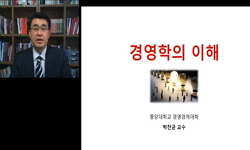In today's business environments, managers face pressure to quickly process increasingly large quantities of information. Unfortunately, the human capacity to process information has not grown at the same rate as the quantity of information, so manag...
http://chineseinput.net/에서 pinyin(병음)방식으로 중국어를 변환할 수 있습니다.
변환된 중국어를 복사하여 사용하시면 됩니다.
- 中文 을 입력하시려면 zhongwen을 입력하시고 space를누르시면됩니다.
- 北京 을 입력하시려면 beijing을 입력하시고 space를 누르시면 됩니다.
https://www.riss.kr/link?id=T10552621
- 저자
-
발행사항
[S.l.]: The University of Texas at Austin 2001
-
학위수여대학
The University of Texas at Austin
-
수여연도
2001
-
작성언어
영어
- 주제어
-
학위
Ph.D.
-
페이지수
228 p.
-
지도교수/심사위원
Supervisor: Sanda Erdelez.
-
0
상세조회 -
0
다운로드
부가정보
다국어 초록 (Multilingual Abstract)
Analysis of the data showed that managers utilized both proactive and reactive strategies to manage their environment. These strategies were not sufficient to completely eliminate information overload. This study identified characteristics of information present in information overload situations, the factors that added complexity to the situations, and the context in which information overload was most likely to occur.
During overload situations, information flow was bidirectional and constant. Information came from multiple sources and was often incomplete or changed frequently. While multiple factors (managerial roles, decision making, information behavior, and instructional technologies) contributed varying degrees of complexity to information experiences, the single defining difference between information intensity and information overload was quantity of information. The primary managerial role in which information overload occurred was that of disturbance handler. Information overload situations developed when the quantity of information (coming in and going out) and the number of secondary roles played by a manager were more than an individual could handle. The situation was most likely to occur when managers were focused on a single issue (a disturbance) that persisted over a sustained period of time and involved information that was “immediately actionable” (that is, requiring execution of immediate tasks as well as cognitive processing).
This study has cross-disciplinary implications for research on information behaviors, characteristics of information, and dynamic interactions in the total information environment in the fields of both information science and management science. Practitioners interested in jobs that require complex logistics and problem-solving activities may also benefit from identifying tasks associated with “immediately actionable” information that could possibly be automated to relieve information overload.
In today's business environments, managers face pressure to quickly process increasingly large quantities of information. Unfortunately, the human capacity to process information has not grown at the same rate as the quantity of information, so managers sometimes find themselves feeling overloaded with information. The goal of this study was to develop a set of theoretical constructs that explain how information overload is related to managerial roles of engineers in a large, multinational oilfield services company. Grounded theory, using layered triangulation techniques, was the methodology employed.
Analysis of the data showed that managers utilized both proactive and reactive strategies to manage their environment. These strategies were not sufficient to completely eliminate information overload. This study identified characteristics of information present in information overload situations, the factors that added complexity to the situations, and the context in which information overload was most likely to occur.
During overload situations, information flow was bidirectional and constant. Information came from multiple sources and was often incomplete or changed frequently. While multiple factors (managerial roles, decision making, information behavior, and instructional technologies) contributed varying degrees of complexity to information experiences, the single defining difference between information intensity and information overload was quantity of information. The primary managerial role in which information overload occurred was that of disturbance handler. Information overload situations developed when the quantity of information (coming in and going out) and the number of secondary roles played by a manager were more than an individual could handle. The situation was most likely to occur when managers were focused on a single issue (a disturbance) that persisted over a sustained period of time and involved information that was “immediately actionable” (that is, requiring execution of immediate tasks as well as cognitive processing).
This study has cross-disciplinary implications for research on information behaviors, characteristics of information, and dynamic interactions in the total information environment in the fields of both information science and management science. Practitioners interested in jobs that require complex logistics and problem-solving activities may also benefit from identifying tasks associated with “immediately actionable” information that could possibly be automated to relieve information overload.











